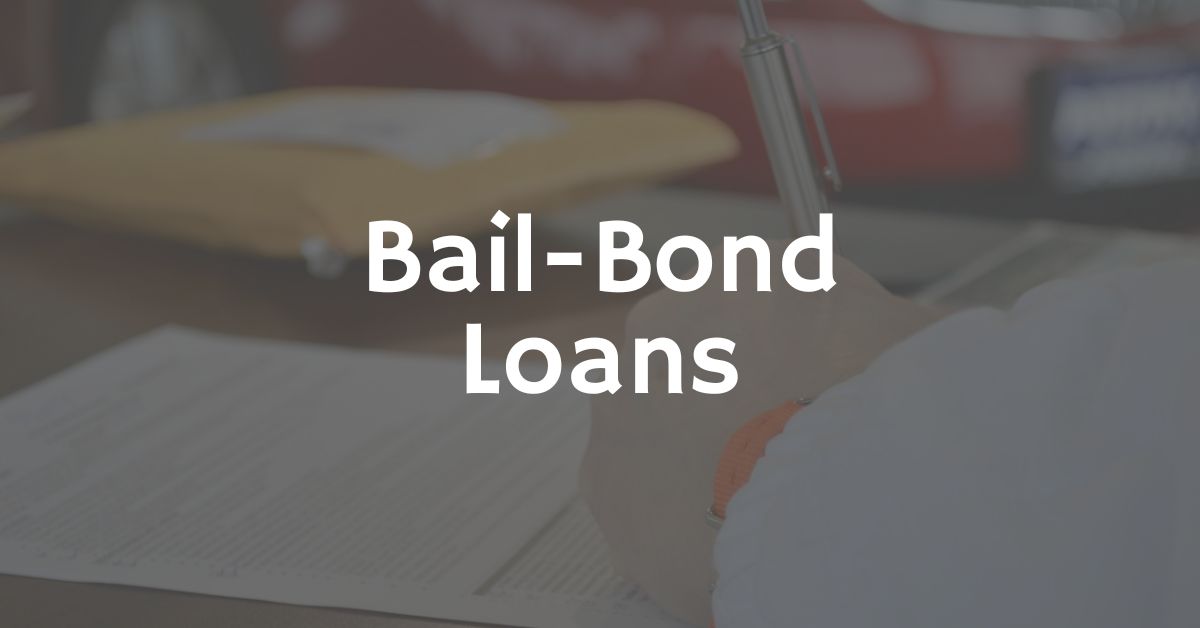How to Get a Loan to Bail Someone Out of Jail
When someone is arrested and held in jail, they may be given the opportunity to be released temporarily by posting bail. Bail is a financial guarantee to ensure that the individual will appear in court for their scheduled hearings. However, the cost of bail can be prohibitively high for many people, and securing the necessary funds can feel daunting. In these cases, loans and alternative financing options may be required.
Understanding Bail and the Bail Process
When someone is arrested, the court may set a bail amount based on factors such as the severity of the alleged crime, flight risk, and prior criminal history. Bail can range from a few hundred dollars to several thousand or even tens of thousands of dollars. The goal of bail is to ensure that the defendant returns for their court hearings while giving them the opportunity to leave jail before their trial.
If you cannot afford the full bail amount, you may seek alternatives to secure the release of the person in question. Let’s go over the main options available.
1: Using a Bail Bond to Secure Release
What is a Bail Bond?
A bail bond is a contract between a bail bondsman and the defendant or their representative (such as a family member or friend) in which the bondsman agrees to pay the full bail amount in exchange for a fee, typically 10-15% of the total bail. For example, if the bail is set at $10,000, the fee to the bondsman would generally be $1,000-$1,500.
Bail bonds are the most common and straightforward way to bail someone out when you don’t have the full cash available. Here’s how it works:
- Find a Bail Bondsman: Start by contacting a licensed bail bond agency in your area. Many bail bond agents work 24/7, so you can get help at any time of day or night.
- Provide the Necessary Information: The bondsman will need to know details about the person in jail, including their name, charges, and the bail amount set by the court. You may also need to provide identification and personal financial information.
- Pay the Premium: Once the contract is signed, you’ll pay the fee (which is usually 10-15% of the bail). For a $10,000 bail, this would be $1,000-$1,500.
- Co-Signer Agreement: If you can’t cover the full fee, some bondsmen may ask for a co-signer or collateral. This is usually someone who guarantees the full bail amount if the person does not show up for court.
- Release and Court Appearances: Once the bail bond is posted, the defendant will be released from jail. However, they must appear in court for their scheduled hearings. If they miss their court date, the full bail amount is forfeited, and the bond agency will take legal action to recover the money.
Pros of Using a Bail Bond:
- Quick and easy way to secure release.
- You don’t need to have the full bail amount.
- Bondsmen are experienced in navigating the bail process.
Cons of Using a Bail Bond:
- The fee paid to the bondsman is non-refundable.
- If the defendant doesn’t show up in court, you may be liable for the entire bail amount.
2: Taking Out a Personal Loan
If you don’t want to use a bail bond or if the bondsman’s fees are unaffordable, you can apply for a personal loan from a bank or credit union. This option can provide the funds needed to pay bail directly to the court. However, there are some important factors to consider:
Steps to Apply for a Personal Loan:
- Check Eligibility: You’ll need a good credit score and a stable income to qualify for a personal loan. Some lenders may also require collateral, especially if the loan amount is high.
- Shop Around: Compare loan offers from different banks, credit unions, and online lenders. Look at the interest rates, repayment terms, and fees. You may find lenders offering competitive terms.
- Submit an Application: Once you’ve found a lender, you’ll need to submit a formal application. This may require personal financial documents, proof of income, and details about the person in jail.
- Receive Funds: If approved, the lender will transfer the loan amount into your bank account. You can then use the loan to pay the bail and have the defendant released from jail.
- Repayment: Be mindful of the loan’s repayment terms. You’ll need to make regular payments with interest, which could add up over time. If you’re unable to repay the loan, your credit score and financial stability could be negatively impacted.
Pros of a Personal Loan:
- You don’t have to pay an agency fee like with a bail bond.
- Loans can sometimes offer better interest rates and repayment terms.
Cons of a Personal Loan:
- You need to have a good credit score to qualify for favorable terms.
- It may take a few days to get approved and receive the funds, which can delay the process of getting someone out of jail.
- Taking on debt may add financial strain, especially if you can’t repay it quickly.
3: Using a Credit Card
In some cases, you can use a credit card to pay bail directly, although not all jails or bond agencies accept credit card payments. If they do, you’ll need to be aware of the following:
Using a Credit Card for Bail:
- Confirm Payment Options: Contact the jail or bail bondsman to ensure that they accept credit card payments for bail. Some may allow you to use a card, while others do not.
- Be Aware of Fees: Credit card payments can incur processing fees, and you may also face high-interest rates if you don’t pay off the balance quickly.
- Consider the Impact: If you’re using credit to pay bail, make sure you can pay off the balance before interest rates accumulate. If not, your debt could snowball quickly.
Pros of Using a Credit Card:
- Fast access to funds if the jail accepts credit card payments.
- No need for a loan application or approval process.
Cons of Using a Credit Card:
- High-interest rates if the balance is not paid off quickly.
- Potential fees for processing payments.
4: Taking Out a Loan Against Assets or Property
If you have assets such as a home or car, you might be able to take out a secured loan or home equity loan to cover the cost of bail. This option allows you to use your property as collateral in exchange for the funds.
How Asset-Based Loans Work:
- Use Collateral: You’ll need to offer your property (e.g., a house or car) as collateral for the loan. The lender will evaluate the value of the asset to determine the loan amount.
- Repayment Terms: Asset-based loans generally come with fixed repayment terms, but if you don’t repay the loan on time, the lender can take possession of the asset.
Pros of Asset-Based Loans:
- Can offer larger loan amounts since the loan is secured by collateral.
- Lower interest rates than unsecured loans or credit cards.
Cons of Asset-Based Loans:
- Risk of losing your property if you fail to repay the loan.
- May require a lengthy approval process, which could delay the bail.
5: Crowdfunding for Bail
In some situations, especially if you can’t afford to borrow money, you might consider turning to crowdfunding to raise funds for bail. Platforms like GoFundMe, Fundly, or YouCaring allow you to create a campaign and ask friends, family, and even strangers to contribute to your cause.
How Crowdfunding Works for Bail:
- Create a Campaign: Set up an account on a crowdfunding platform and explain the situation clearly. Be transparent about why the bail is needed, how much you need, and what the money will be used for.
- Share the Campaign: Promote the campaign through social media, email, and word-of-mouth to gather contributions. Offering updates on the situation can encourage more donations.
- Receive Funds: Once you’ve raised enough funds, you can use the money to pay for the bail and secure the person’s release.
Pros of Crowdfunding:
- No interest or fees, as the money is donated.
- Helps build a community of support.
Cons of Crowdfunding:
- It may take time to raise enough funds.
- There’s no guarantee that the campaign will meet its goal.
Getting a loan to bail someone out of jail is a serious financial decision, and it’s important to weigh the pros and cons of each option.
If you’re not sure what option is best, consider speaking with a financial advisor or a legal professional to help you navigate the process and choose the best solution for your situation.

